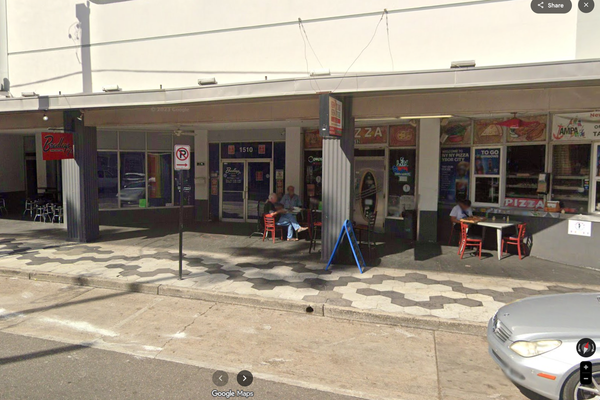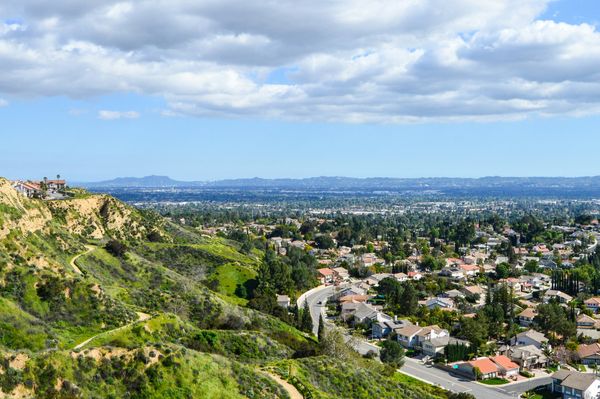
Huge swells over the weekend have revealed the remains of a mysterious shipwreck that is likely to be more than 160 years old.
Andrew Constable said local legend had it the wreck would reappear after big swells moved sand around the beach on the far south coast.
He and his famliy went hunting for it after the weekend's big waves and found it on Sunday on Nelsons Beach, near Tathra.
South coast residents Ollie and Nancy Hinde live near the wreck and had seen it after big seas in the mid '70s.

According to the Hindes, who have been following the shipwreck for more than 50 years, it usually only resurfaces for a few days before it is lost again to shifting sands.
"It was there on Saturday and we went across [Monday] afternoon and there was not a lot that you could still see, so in the gulf where it is between these two rock outcrops, it washes out but it doesn't stay out very long.
"I think it wants to hide its mystery," she said.

The Hindes had always been fascinated by their discovery in the 1970s and had again found the wreck after stormy seas in 1999.
They kept clippings about the wreck, including an article from the Bega District News published on April 4, 1999, revealing the last time the wreck had likely been seen, more than 20 years ago.
According to the article, there had been no official record of the wreck att the time, so National Parks and Wildlife Services passed on information about the wreckage to marine archaeologists at the NSW Heritage Office.

Also in their personal archive was an excerpt from the Tathra Times, written by historian Sister Bernice Smith in 1964. She wrote the wreck's timbers suggested it was an American vessel and it had been found full of cedar logs.
The Hindes also have a copy of the Tanja Centenary that was researched and written by Tanja identity Robert Russell on the occasion of the Tanja Public School Centenary in 1978.

According to Mr Russell, the wreck was a schooner of about 70 tonnes, discovered on the shore between the Bega River and the locality of Nelson.
He said the cedar logs were sold during a public auction in 1859, by the administrator of Public Affairs, and were turned into furniture, including two tables at Jellat.
The sources revealed that the first recorded sighting of the wreck was in 1859 by Captain Fletcher of the Illawarra Steam Navigation Company's SS Mimosa.
The SS Mimosa was wrecked at nearby Aragunnu just four years later in 1863 enroute to Sydney from Merimbula. Two people drowned.
Ms Hinde said there had been a lot of speculation and anecdotal oral histories given over the years about the origin of the cedar the mystery schooner was carrying.
"Ollie had been told by some old bush workers about how they came across where there'd been cedar trees cut down on Dr George, and they often wondered how and why they had come to be cut down because they thought they were in virgin country," she said.
"One of the stories was that this ship that washed in there, they were poaching cedar, but it's all hearsay and I don't know what evidence there is for that story."
Eden historian sheds light on proper preservation of shipwrecks

Eden-based historian Angela George, who has has been working on a shipwreck exhibition likely to be displayed at the end of April at the Eden Killer Whale Museum where she works, said there were a "ridiculous number" of shipwrecks that have never been located.
"Because everything was very ship-based or maritime-based there were a lot of shipwrecks up and down the coast and a significant proportion of them haven't even been located."
She said that between Batemans Bay and the border of NSW and Victoria, there have been around 120 wrecks officially recorded.
Ms George said that according to the NSW Heritage Department's Maritime Heritage database, the only shipwreck formally recorded in that area was charred remains of a 50ft schooner identified in 1891, "found bedded on the coast between Bega River and Nelsons Lagoon".
"It's the only one that I can find on their record system that was in that area," she said.
Ms George said schooners were used on the Far South Coast for transporting cargo, such as dairy products or timber.
"Probably for about 100 odd years, the main way out of the area was by boat, because the roads were so unreliable and hellish."
Ms George said that any shipwreck should never be disturbed by people trying to dig it up and remove it.
"It's actually protected under the NSW Heritage Act," she said.
"All shipwrecks in state waters that are more than 75 years of age, or even those that are younger that have local or state significance, cannot be disturbed without prior approval by the Heritage Council of NSW.
"It's very easy for it to lose significance when people start pulling it apart.
"I understand the fascination that people have with shipwrecks and the concern they have leaving it there for it to be covered up and lost again, but realistically when it's covered up it's actually protected."
She said the wood has been preserved because it has been consistently buried under sand and kept wet.
"When you take a ship or boat out of water, the timbers shrink and open up, whereas if you keep it in the water and it's kept underneath wet sand it's being saved from all the elements," she said.







